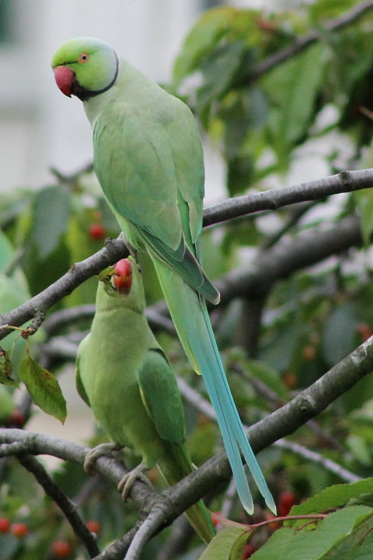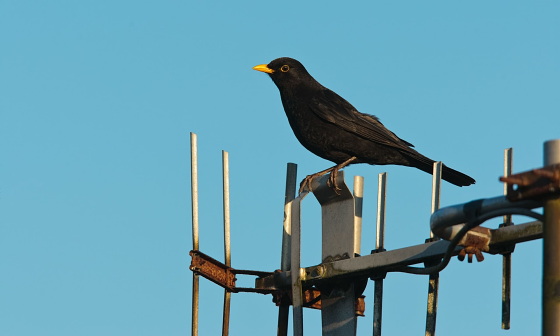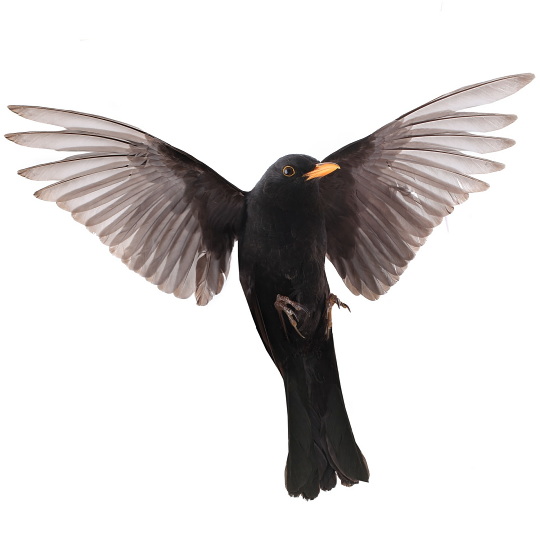The evolution of animals is also affected by the 'city' that human beings have created

By Fred Faulkner
In " origin of species " written by Charles Darwin, organisms are constantly changing to adapt to the environment by natural selection, it is said that species diverge and various species occur. This book was written in the mid-1800's, and in the present age more than 150 years since then, creatures have evolved into environment-friendly species in urban buildings Things also exist.
Darwin comes to town: how cities are created new species | Cities | The Guardian
https://www.theguardian.com/cities/2018/jul/23/darwin-comes-to-town-how-cities-are-creating-new-species
Birds frequently seen in Singapore "Jawahacka" was brought as a pet from Indonesia around 1925 and gained popularity as a "master of machine manneques". In 2018, about a hundred years later, Java Jacka has expanded to a scale comparable to the population of Singapore by greatly increasing the number of individuals.
In addition, parakeet " Paraquito " brought to London from India and Africa is a bird with a vivid wing color, spreading to various countries due to Paraquito trading in Europe during the 20th century. In 1974 the owner of the Belgian Zoo launched 40 Paraquatoes with the aim of "coloring more in the city of Brussels". And about 40 years later, it is said that Parabiat living in the city now has more than 30,000.

In this way, humans have brought many animals into the city. Initially they are animals living in wild habits, while individuals who adapted to the urban environment survived for decades of time, individuals are gradually changing from their original appearance to a slightly different species .
One such example is a crow confirmed in Sendai, Japan. Crows are said to be highly intelligent in birds, but the crows seen in Sendai have acquired the unique wisdom of the city. It is not easy to eat a nut in a hard shell even with a crow with a big beak. So Crow put on the road the tree nuts that had entered the hard shell and got the wisdom of breaking the shell and eating the contents by stepping on the car.
Also, among spiders living in Vienna there are species that nest in bridge girders illuminated at night. Spiders are generally creatures that are active during the day, but we have devised a method to make insects drawn to brightness by placing a trap in the place illuminated by lighting at night to make it food. In this way, the spider of Vienna is getting 4 times more food than usual.
The impact of urban environment does not extend only to the behavior of living things. It is also clear that the characteristics of animals themselves are changing due to urbanization.
Researchers in the United States discovered that the length of the feathers of Sanshik Swallows, which had acquired the custom of living in highway bridges made of concrete in the 1980 's, decreased by an average of 2 mm in 10 years. In addition, when we investigated the length of the feathers of Sanshik Swallows, which is dead on the shoulder, it is clear that it is 0.5 cm longer on average than surviving individuals.
In general, the shape of bird's feather is closely related to lifestyle. While short, round blades are advantageous for sudden turning and flight in a short time, long and sharp blades are better suited for flying at a faster speed. In other words, in order to live near an expressway where many cars run, it is advantageous for survival that it is more advantageous to have a more compact flying way by having short feathers than having long feathers, It is supported by a change in the characteristics of.

By Don DeBold
A bird that has been confirmed to be "urbanized" remarkably more than other birds, it is a bird called "Croutadori". This bird is a black bird, also known as "Black Bird", which is sung as "Blackbird singing in the dead of night" (Blackbird is singing at midnight) with the lyrics of "Beatles' song" Blackbird " , I have the habit of starting to cry before the day breaks.

In the past, it was a croutadori who lived in mountains and forests and had a habit of changing the place to live in summer and winter, but as cities emerge, they are asking for living in the city, I came to settle down. In addition, it is a Croutadori who used to have a habit of beginning to cry at the same time as dawn, but when it began to acclimatize to the city, the time to start crying gradually became faster. This seems to be to start to cry two to three hours before dawn in recent years in order to avoid barking out the bark by the trams and cars moving in the morning.
Even more interesting is the fact that the 'tone' when singing has also changed. Compared to the previous rounds, it is said that the birds of the blackbirds that came to live in the city became higher. This is, of course, the result of "evolution" of the blackbirds in order to reliably deliver cries even in the noisy urban noise.
Croutadori has changed the pattern of life and how to sing in accordance with the city, but the pattern of breeding is also changing. Croutadori, which once had a migratory lifestyle pattern, was able to enter reproductive activities only after establishing new residence. However, as Croutadori, which came to live in the city and changed places to live in summer and winter, began breeding activities as soon as that period arrived, the breeding season is one month longer than the Croutadori living in Noyama It seems that it is getting faster.

Generally, the evolution of living things takes a very long time. Under such circumstances, the creatures like this clitoris are changing to have completely different characteristics from the conventional one in a shorter time than usual of several decades.
Related Posts:







